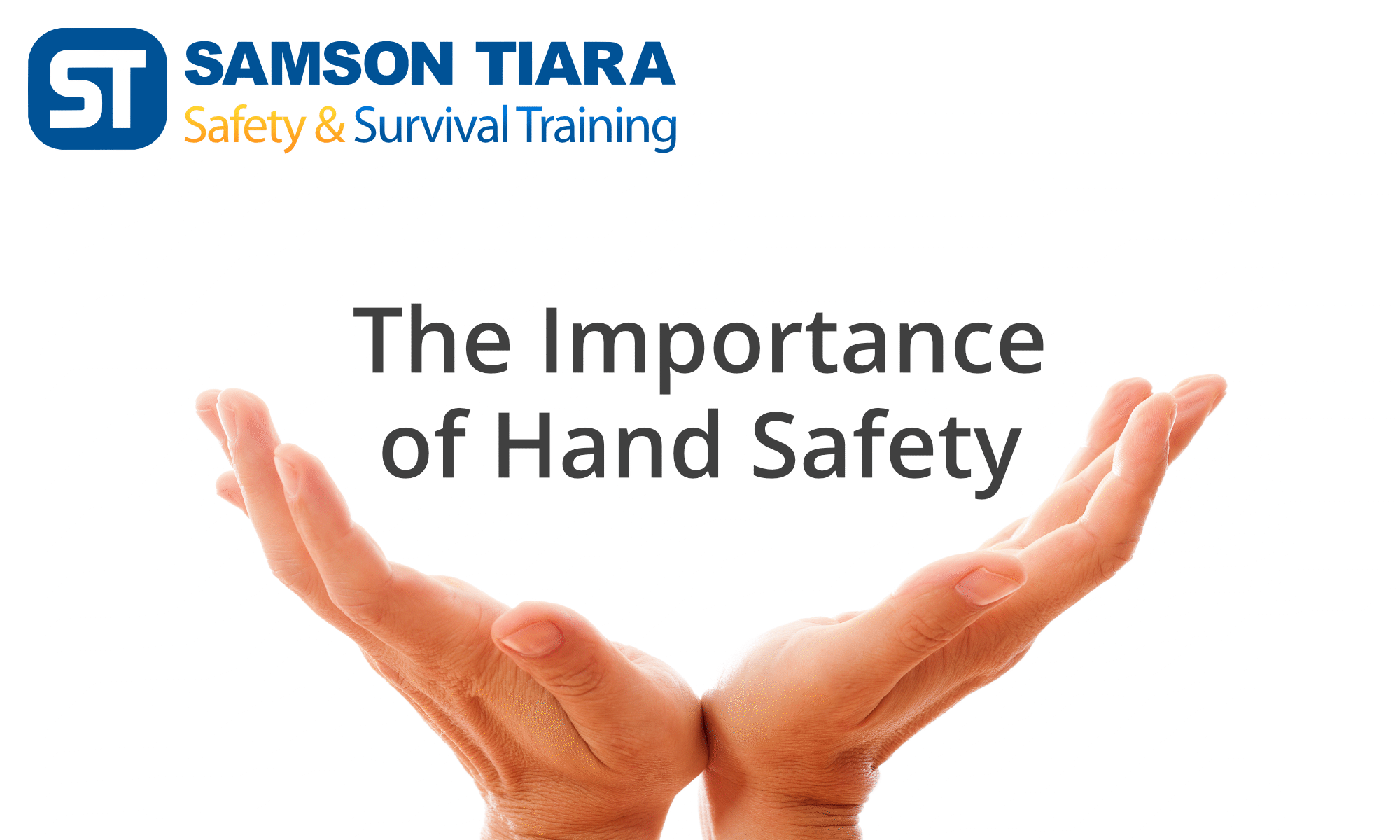The human hands are an exceptional feat of engineering. Made up of complex interactions between bones, muscles and ligaments, they are our most important tools for interacting with the world around us. Our hands are in constant use, involved in almost every task we do on a daily basis, often without even thinking about it, making our hands very vulnerable to injury.
Even minor injuries to our hands can have a disproportionate impact when compared to minor injuries to another part of our body, because our hands are always in use. Consider a simple cut to the index finger vs a cut to your arm. Both will hurt, with a cut to the arm, you will bandage it and likely forget about it. A cut to the finger, however, will cause frequent discomfort as you carry out your tasks; Washing your hands, typing an email, preparing a meal, all basic things you do daily but you will be constantly reminded of the injury due to pain, discomfort or reduced mobility due to the wound.
Due to the importance of our hands in our day to day lives, it is important that we do everything we can to protect them from injury, especially in the workplace.
A Common Source of Injury
According to figures released by OSHA, more than 42% of all nonfatal occupational injuries to upper extremities in 2017 that involved days away from work involved hands, with offshore oil & gas, construction, mining, manufacturing, warehousing and transport industries particularly susceptible to hand-impact injuries. A similar study by Safe Work Australia showed similar figures, with hands fingers and thumbs being the second most frequent source of reported injuries.
The International Association of Drilling Contractors (IADC) reported that based on their data from 2018, 29.47% of all lost time incidents by body part involved fingers (20.26%) and hands/wrists (9.21%), and that 41.41% of the total recordable incidents by body part involved fingers (31.12%) and hands/wrists (10.29%).
The costs of the injuries are also expensive, not just due to the cost of medical care and the effect on insurance and work cover premiums, but also due to the loss of productivity during the healing process, or, in cases of extreme injury, the permanent reduction of productivity due to irreversible damage or permanent loss of the limb.
The worst part is that OSHA statistics have shown that 70.9% of hand and arm injuries could have been prevented with the use of appropriate personal protective equipment (PPE), specifically safety gloves. According to their data, 70% of workers don’t wear hand protection, while 30% of those that do are not wearing the right kind of glove for the task.
Not All Industries Face Similar Risk
Every job, no matter how mundane or safe, carries some risk of injury to the hands; Even working behind a computer all day can result in Repetitive Strain Injury (RSI), it is therefore important for HSE Managers to identify the key risks affecting their industry.
For Example:
-
-
- In the oil & gas industry, workers deal with heavy, sometimes slippery equipment (due to the presence or oil or lubricants) which can result in pinching or crushing injuries.
- In the construction industry, many injuries occur due to the use of power tools, heavy machinery or worker fatigue.
- In the mining & railway industries, the low-lighting conditions and sharp or heavy equipment used can lead to hand injuries.
- In the manufacturing industry, the use of large equipment, convey systems and machinery can quickly result in very bad injuries due to carelessly placing a hand in the wrong place.
-
Developing a Safety Plan
Due to wide variety of environmental factors and risks facing different industries, it is imperative for HSE Managers to develop and implement an appropriate Hand Safety Program in their organisation.
To help in developing this program, HSE Managers should conduct extensive Risk Assessments and Job Safety Analysis of the tasks in their workplace environment to help them understand the risks that their workers may face. This process will help the HSE manager identify key risk areas to develop procedures, training programs and identify the correct PPE required to reduce the risk of injury to workers, and to develop proper response procedures in case of injury.
It is also important that HSE Managers keep up to date on changes to relevant regulations and standards for PPE, and to understand the differences between the various types of PPE and the protection they offer to ensure the right type of PPE is used for the right job.
Protective Gloves
It is important for HSE Managers to ensure that the use of gloves during work is not only a commonly followed rule, but also becomes an integral part of the work and safety culture of the organisation.
According to Occupational Safety and Health Administration (OSHA), if a workplace hazard assessment reveals that employees face potential injury to hands and arms that cannot be eliminated through engineering and work practice controls, employers must ensure that employees wear appropriate protection. Protective equipment includes gloves, finger guards and arm coverings or elbow-length gloves.
HSE Managers should conduct extensive research and testing to choose the correct gloves for the correct identified hazard and ensure that employees are trained to use them properly, and know how to detect and report any faults.
There are many types of protective gloves available today to protect against a wide variety of hazards. The nature of the hazard and the operation involved will affect the selection of gloves. The variety of potential occupational hand injuries makes selecting the right pair of gloves challenging. It is essential that employees use gloves specifically designed for the hazards and tasks found in their workplace because gloves designed for one function may not protect against a different function even though they may appear to be an appropriate protective device.
The protective gloves should be inspected before each use to ensure that they are not torn, punctured or made ineffective in any way. Gloves that are discoloured or stiff may also indicate deficiencies caused by excessive use or degradation from chemical exposure. Any gloves with impaired protective ability should be discarded and replaced. Reuse of chemical-resistant gloves should be evaluated carefully, taking into consideration the absorptive qualities of the gloves. A decision to reuse chemically-exposed gloves should take into consideration the toxicity of the chemicals involved and factors such as duration of exposure, storage and temperature.
Gloves should protect the workers from abrasions and slashes caused by sharp objects, and able to absorb energy and provide high levels of impact resistance to protect all the delicate parts in the hand. The gloves should have grip that give the workers control and confidence when handling hazardous equipment and materials.
It is very important that gloves fit the wearer properly. If the glove is too small it may limit the mobility of the wearers hand, reducing their productivity or may introduce unforeseen hazards. If the glove is too small the wearer may not be able to properly grip objects, or the glove could get caught in machinery and lead to unforeseen injury.
Based on the rules and recommendations by the Centres for Disease Control and Prevention (CDC) and HSE, protective gloves that can be considered for use are gloves that cover the cuff (wrist) of gown, gauntlets and sleeving that covers part or all of the arm. When operating machines such as bench drills, the gloves should be avoided as the gloves might get caught. They advise that workers should wear separate cotton inner gloves can help prevent hot, sweaty skin and skin problems.
Thanks to advances in research and development HSE Managers have a larger range of choices than ever before when it comes to choosing which protective gloves can be used to protect their workers. Most of the companies that produce modern safety gloves increase their unique and advanced products by developing the new materials and using current technology to improve their products and bring them in line with the working processes in industry. All of these upgrades are aimed at better protecting workers in a variety of high-risk industries and to increase their performance and reliability.
Training
Please keep in mind that not every risk or safety issue can be solved through PPE alone. Sometimes an adjustment in procedures can increase safety, for example introducing the proper lifting technique does not require additional PPE. Therefore, HSE Managers need to keep in mind the need for training.
The reduction in injuries and associated costs is well worth the investment in competency based safety training. Samson Tiara can help in this regard with its wide range of available safety training courses to help keep your workers safe.
Samson Tiara offers courses such as Job Safety Analysis and Risk Assessment to help HSE managers in developing the appropriate HSE plans and procedures for their organisation.
Samson Tiara also offers an online eLearning course for Hand Safety Awareness that is accredited by the Occupational Safety and Health Administration (OSHA) and RelyOn Nutec. As the hands are the most used tools on the job and are exposed to more hazards and potential injuries than any other part of the body, this 30 minute course will teach workers how to prevent hand injuries and to identify and control hazards in the workplace.
Also available via eLearning is Hand – Arm Vibration Awareness Training. This 30 minute course teaches the employer’s legal obligations to reduce risk and the measures that you can take to control your exposure to hand-arm vibration.
Samson Tiara is dedicated to improving the safety and wellbeing of all workers, and provides a wide range of other safety training courses. To find out more about the courses we offer and what we can do to help you and your organisation improve worker safety please feel free to contact us at:
Samson Tiara
The Garden Center #6-03,
Kawasan Komersial Cilandak,
Jl. Raya Cilandak KKO,
Jakarta 12560, Indonesia
Phone: +62 21 780 1388
Fax: +62 21 780 1389
Email: office@survival-systems.com / marketing@survival-systems.com
Website: http://www.samson-tiara.co.id
LinkedIn: https://www.linkedin.com/company/pt.-samson-tiara
* PT. Samson Tiara is 1 of 14 TEEX accredited training providers in the world.*
* PT. Samson Tiara is the first OPITO Approved Training Provider in Indonesia & winner of the 2016 OPITO training provider of the year.*
References and Further Reading
Getting a Grip on Hand-Impact Injuries
https://ohsonline.com/Articles/2019/09/06/Getting-a-Grip-on-Hand-Impact-Injuries.aspx?m=1&Page=1
IADC 2018 Annual Report for Industry Totals
http://www.iadc.org/wp-content/uploads/2019/06/2018-Annual-Report-for-Industry-Totals.pdf
Hand and Finger Injury Risks in Oil and Gas Industry
http://www.iadc.org/wp-content/uploads/2019/06/2018-Annual-Report-for-Industry-Totals.pdf
More Than Half of all Injuries Involve Hands
https://www.ishn.com/articles/105011-more-than-half-of-all-injuries-involve-the-hands?
Hand Injuries: Dangerous Industries and Jobs
https://blog.prochoice.com.au/safety-gloves/hand-injuries-dangerous-jobs/
Take Matters into Your Own Hands: Understanding Hand Injuries in the Workplace
https://ohsonline.com/Articles/2018/08/01/Take-Matters-into-Your-Own-Hands.aspx
Keeping a Firm Grip on Hand Safety
https://www.ehstoday.com/ppe/hand-protection/article/21915899/keeping-a-firm-grip-on-hand-safety
The Importance of Hand Safety
https://nesscampbell.com/the-importance-of-hand-safety/
Risk at Work – Personal protective equipment (PPE)
https://www.hse.gov.uk/toolbox/ppe.htm
Tips for Avoiding Hand injuries & Understanding Hand Protection Standards
https://explore.honeywell.com/Rig-Dog-ASEAN.html
Personal Protective Equipment
https://www.osha.gov/Publications/osha3151.pdf
Using Personal Protective Equipment (PPE)
https://www.cdc.gov/coronavirus/2019-ncov/hcp/using-ppe.html
Disease and Injury Statistics by Type – Safe Work Australia
https://www.safeworkaustralia.gov.au/statistics-and-research/statistics/disease-and-injuries/disease-and-injury-statistics-type
Type of Injury or illness and body parts affected by nonfatal injuries and illnesses in 2014 – U.S. Bureau of Labor Statistics
https://www.bls.gov/opub/ted/2015/type-of-injury-or-illness-and-body-parts-affected-by-nonfatal-injuries-and-illnesses-in-2014.htm
Hand Injury Statistics
https://www.superiorglove.com/blog/hand-injury-statistics










